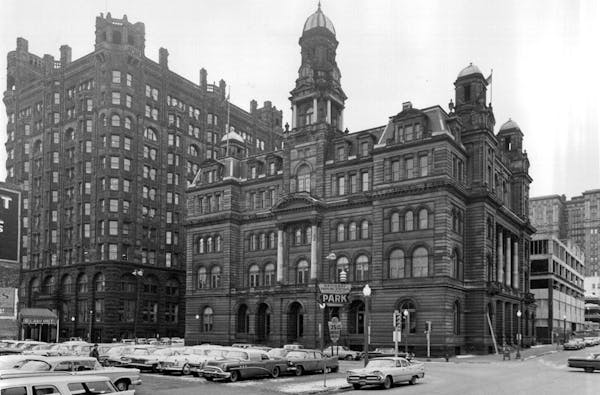Then and now. Those are three potent words for anyone interested in the history of a city. It's easy enough to know what a city looks like today, of course. But if you want a full understanding of a place, it helps to know what it used to be.
Three words to help with that: Norton and Peel.
It sounds like a vaudeville team, but they're the names of two men who ended up recording an invaluable history of the Twin Cities. And they weren't even historians.
Walter Norton and Clifford Peel practiced the most pedestrian, ordinary, straightforward art: commercial photography. You paid them to take a shot of your building, your store, your new housing development. No moody shots with looming shadows, no pouting models. Just the world in the way it looked.
Norton and Peel worked for the C.J. Hibbard Studio, a respected commercial photographer. When Hibbard died in 1924, Norton and Peel started their own studio, Norton & Peel. They did well enough to be able to buy the archives of Hibbard's studio, accumulating photos that went back to 1886.
The two men kept their shutters clicking for decades, amassing more than 300,000 photos, before selling their studio in 1965. Norton died three years later; Peel lived until 1987.
The Minnesota Historical Society acquired a huge batch of the Norton & Peel archives in 1979. The society's online archives contain nearly 20,000 images, photo albums and card files that you can explore to make your own then-and-now comparisons.
The archives contain photos of ski jumpers, infants, graduates and groups of employees as well as many, many structures — from power substations to single-family homes, schools, churches, libraries and commercial buildings.
If you're an armchair urban archaeologist (or want to be), all you need to do is select an image from the archive and plug the address into Google.
I got the idea from a Reddit user who has been posting then-and-now photos on the local subreddits, /r/Minneapolis and /r/TwinCities. (He declined to be interviewed for this story.)
The Norton & Peel Photograph Collection is searchable, and categorized by decade. You can skim photos by the decade or look for specific photos.
When I started googling the photos, I was surprised to find that so many big old buildings they shot were long gone and presumably long forgotten. Often, I would plug the address of an interesting looking building into Google, only to find its location marker in the middle of a freeway. It was a stark reminder of how much of the heart of the cities was demolished to build interstates.
In many of the photos, the city streets look chockablock with small shops, each one dedicated to a particular item; shoes, hats, baked goods.
Stores were crammed with signs, too. Big, eye-catching signs, often attached perpendicular to the building. At night the neon signs brought color to the streets.
The world is simpler now, and cleaner. A block that was once a jumble of stores with oversized signs and display windows crammed full of merchandise, lined with newspaper boxes and handbills for the circus is now home to a sleek, single skyscraper that fills the entire block.
Over the decades, we have traded the small and individual scale for the collective. And the commercial districts may be the poorer for it.
But many buildings have survived and thrived. And some city blocks look a whole lot better now than they did in the past.
That's part of the joy of exploring the archive. Norton and Peel aren't around to see what became of the streets and buildings and shops they photographed. But, with the help of Google, you can.










